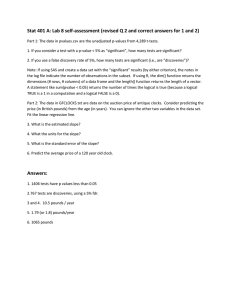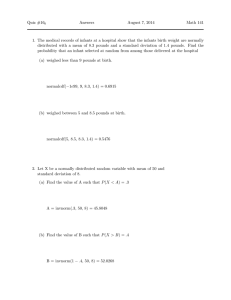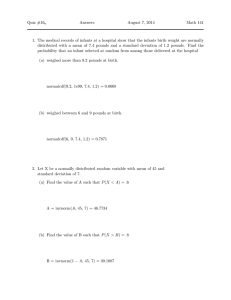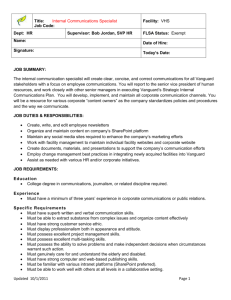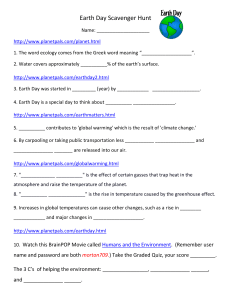Lecture on 1-24 1 Production Process Models
advertisement
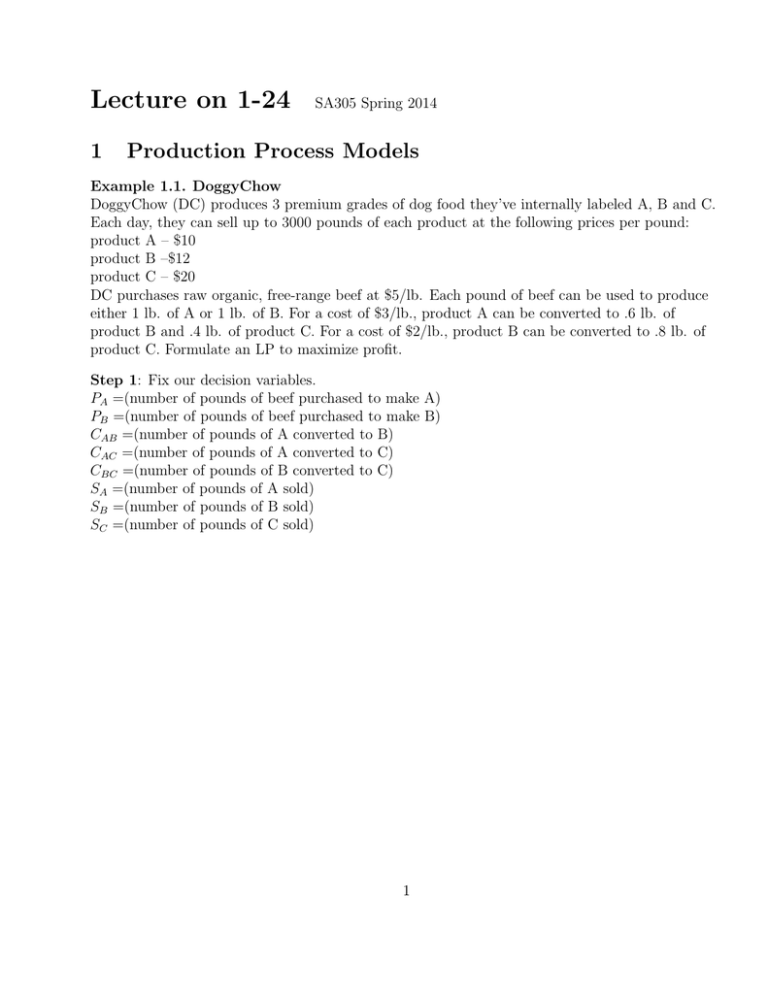
Lecture on 1-24 1 SA305 Spring 2014 Production Process Models Example 1.1. DoggyChow DoggyChow (DC) produces 3 premium grades of dog food they’ve internally labeled A, B and C. Each day, they can sell up to 3000 pounds of each product at the following prices per pound: product A – $10 product B –$12 product C – $20 DC purchases raw organic, free-range beef at $5/lb. Each pound of beef can be used to produce either 1 lb. of A or 1 lb. of B. For a cost of $3/lb., product A can be converted to .6 lb. of product B and .4 lb. of product C. For a cost of $2/lb., product B can be converted to .8 lb. of product C. Formulate an LP to maximize profit. Step 1: Fix our decision variables. PA =(number of pounds of beef purchased to make A) PB =(number of pounds of beef purchased to make B) CAB =(number of pounds of A converted to B) CAC =(number of pounds of A converted to C) CBC =(number of pounds of B converted to C) SA =(number of pounds of A sold) SB =(number of pounds of B sold) SC =(number of pounds of C sold) 1 Step 2: Create the objective function. P rof it = 10SA + 12SB + 20SC − [5(PA + PB ) + 3(CAB + CAC ) + 2CBC ] Step 3: Write down all the constraints. The easy ones are SA ≤ 3000, SB ≤ 3000, and SC ≤ 3000 and nonnegativity. Now we must encode the relationships between the sold amount and the amount that is used for conversions. For type A we have SA = PA − CAB − CAC . For type B we have SB = PB − CBC + .6(CAB + CAC ). For type C we have SC = .4(CAC + CAB ) + .8CBC . 2
